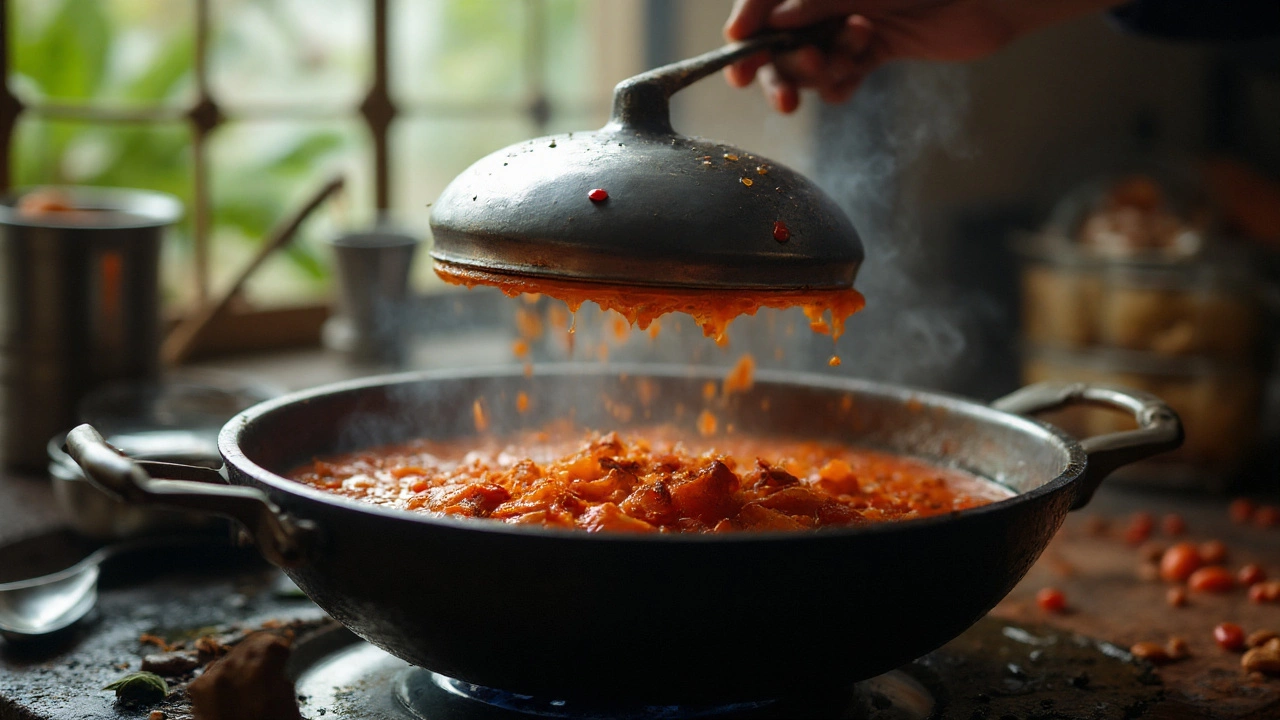How to Thicken Chutney – Quick Tips for Perfect Consistency
Ever served a chutney that was more soup than sauce? A runny chutney can drown the flavors you worked hard to balance. Luckily, fixing texture is easier than you think. Below are practical tricks you can try right now, no fancy equipment needed.
Why Thickness Matters
A thicker chutney clings to your food, letting every bite get a hit of spice, tang, and sweet. It also helps the chutney stay fresh longer because there’s less water for bacteria to grow in. Finally, a good body makes it easier to drizzle, spread, or dip without it sliding off the plate.
Easy Ways to Thicken Your Chutney
1. Cook it down. The simplest method is to simmer the chutney over low heat. Stir occasionally and let the excess liquid evaporate. In 5‑10 minutes you’ll notice it pulling together. This works best for tomato‑based or tamarind chutneys.
2. Add ground nuts or seeds. Roasted peanuts, cashews, or sesame seeds add body and a subtle nutty flavor. Grind a handful in a blender, then stir it in. If you want a lighter touch, use a tablespoon of roasted gram powder (besan).
3. Use a slurry. Mix 1 tablespoon of rice flour, cornstarch, or chickpea flour with a little water. Add it slowly while stirring, then cook for another 2‑3 minutes. The flour thickens the mixture without making it gritty.
4. Incorporate coconut. Fresh grated coconut or coconut milk can bulk up chutney instantly. It works especially well in South Indian coconut‑chutney, adding creaminess and a tropical note.
5. Blend in cooked lentils. A small portion of boiled toor dal or moong dal, blended smooth, will thicken the sauce while keeping it gluten‑free. This trick is popular in Andhra‑style chutneys.
6. Add cheese. A little paneer or grated hard cheese (like parmesan) can act as a thickener and give a savory depth. Crumble and melt it into a warm chutney, stirring until smooth.
When you add any thickener, taste as you go. Some ingredients, like nuts or cheese, bring extra salt or richness, so you might need to adjust seasoning with a squeeze of lemon or a pinch of sugar.
If you find the chutney too thick after cooking, thin it back with a splash of water, but do it slowly. It’s easier to thin than to bring back lost moisture.
Finally, remember that the type of chutney you’re making guides which method works best. Fruit‑based chutneys love a quick simmer, while spice‑heavy chutneys handle nuts and flours better. Experiment with one method at a time to see what fits your taste.
With these simple steps, you’ll never serve a watery chutney again. Grab your favorite recipe, pick a thickening trick, and enjoy a sauce that sticks, flavors shine, and makes every bite better.
Do You Cook Chutney With the Lid On or Off? Simple Rules for Perfect Thickness
Lid on or off for chutney? Clear rules for cooked, raw, and pressure-cooked chutneys. Stop splatter, nail thickness, and store safely-without guesswork.
